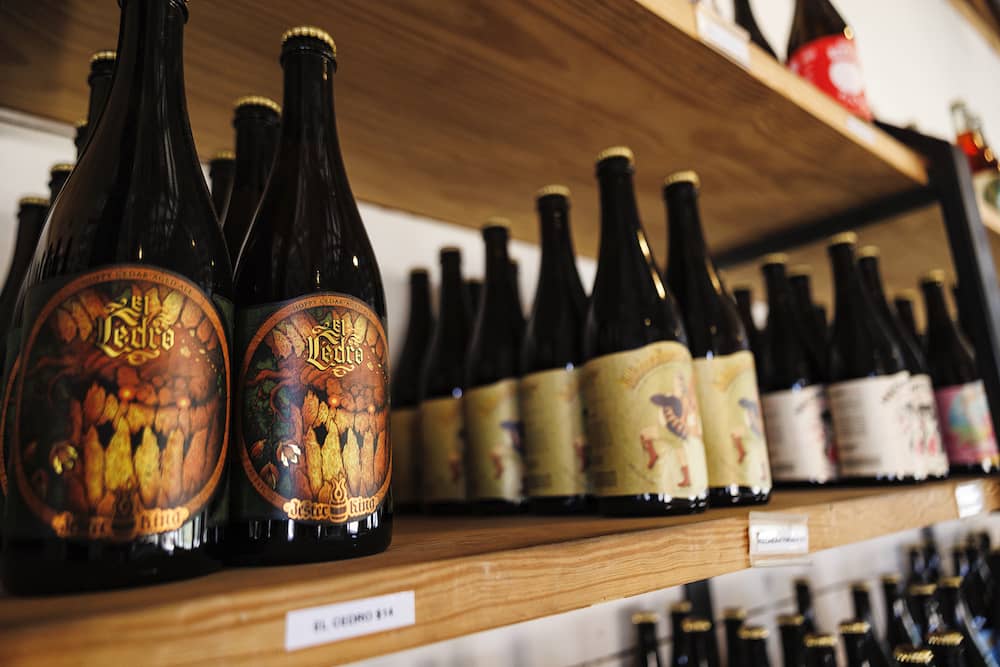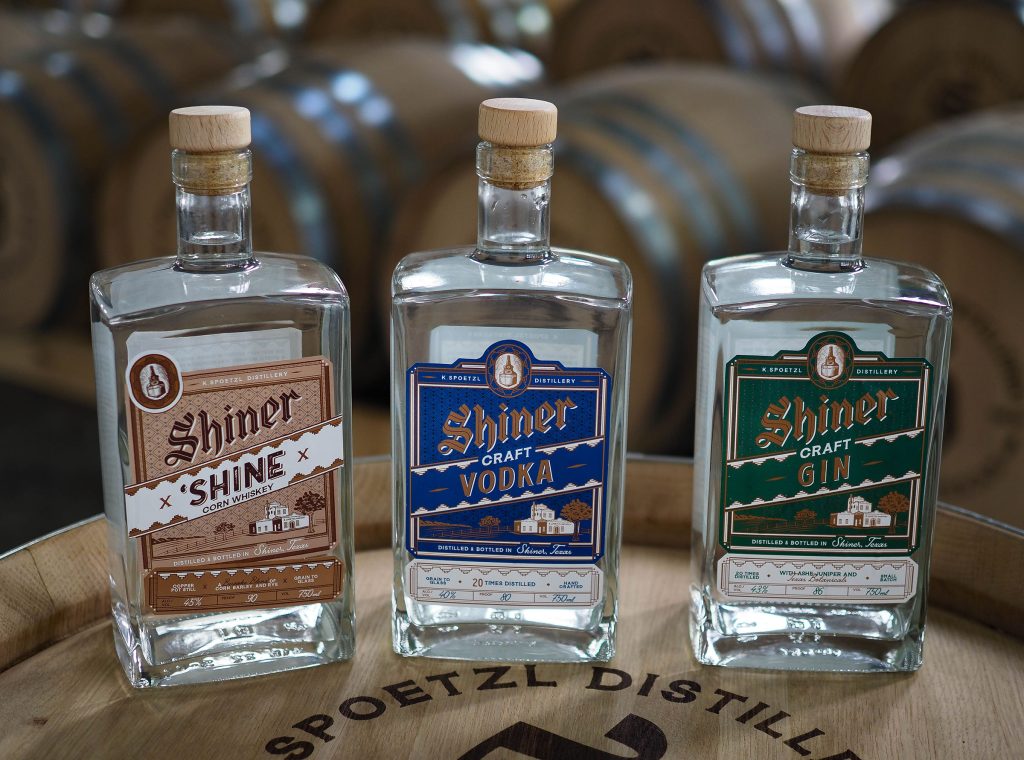Seawall Bar: Enjoy Drinks with Stunning Ocean Sights in Galveston
Seawall Bar: Enjoy Drinks with Stunning Ocean Sights in Galveston
Blog Article
Distilleries Demystified: A Complete Break Down of the Production Process
In the world of spirits production, distilleries work as the enigmatic hubs where raw components are transformed into nuanced and intricate elixirs. The procedure of purification is a meticulous craft that intertwines science, tradition, and virtuosity to yield the spirits we have actually come to appreciate. As we start unwinding the layers of distillery operations, we will browse with the historic origins, complex phases of manufacturing, and the nuances that distinguish one spirit from another. Join us on this trip as we debunk the inner functions of distilleries, clarifying the alchemy that turns grains, fruits, or botanicals into the liquid gold that fills our glasses.
History of Distilling
Exactly how did the old art of distilling develop right into the contemporary sector we understand today? The background of distilling go back countless years, with its beginnings traced to civilizations such as the Mesopotamians, Egyptians, and Greeks. These old societies used crude kinds of purification to create fragrances, medicines, and also alcoholic drinks. In time, this primitive approach advanced, with considerable innovations made by very early Arab sorcerers during the Center Ages. They pioneered using distillation for the production of spirits like brandy and whiskey, preparing for the distilling methods we see today.
The distilling procedure continued to proceed via the centuries, with the refinement of methods and the introduction of brand-new modern technologies. The Industrial Transformation marked a considerable switching factor, as developments such as the column still reinvented mass manufacturing and performance in distilleries. This period saw the rise of legendary spirits brand names that have ended up being household names worldwide. Today, the art of distilling has actually transformed right into an advanced industry, mixing tradition with development to meet the demands of a critical worldwide market.
Raw Product Option

When picking resources, distillers need to take into consideration the sugar material, starch conversion possibility, and any kind of contaminations existing, as these aspects straight impact the fermentation and distillation procedures. In whiskey manufacturing, the selection in between different kinds of grains like corn, wheat, rye, or barley will result in unique flavor profiles. Furthermore, the top quality and freshness of the raw products can impact the efficiency of fermentation and eventually affect the purity and complexity of the last spirit.
Fermentation Process
Throughout the fermentation procedure in distilleries, sugars from the raw products are converted into alcohol by yeast via a natural chain reaction. This important phase normally occurs in big tanks called fermenters (Galveston Whiskey). Yeast, a microbe, eats the sugars existing in the raw products such as molasses, fruits, or grains. As yeast feeds on these sugars, it creates alcohol and carbon dioxide as results. The fermentation process is meticulously monitored to guarantee optimum conditions for yeast task, this hyperlink such as preserving the ideal temperature and pH degrees.
Fermentation times can differ relying on the specific distillery and the kind of alcohol being produced. Some fermentations may last a few days, while others can take weeks. The size of fermentation greatly affects the final taste account of the alcohol. As soon as fermentation is full, the resulting fluid, called the "laundry" or "beer," is then ready to continue to the distillation phase, where alcohol focus is additionally raised through the separation of elements based on their boiling factors.
Distillation Strategies
Complying with the conclusion of the fermentation procedure, distilleries utilize a range of purification methods to more concentrate alcohol material and fine-tune the flavor account of the fluid. Distillation is the process of dividing alcohol from water and various other parts in the fermented liquid via home heating and air conditioning. One usual technique is pot purification, where the fluid is heated in a pot still, permitting the alcohol to vaporize and after that condense back right into fluid type. This technique is recognized for generating rich and full-bodied spirits.
An additional commonly utilized method is column distillation, which includes several purification stages in tall columns. This method is preferred for its performance in creating high-proof alcohol and is typically used in creating vodka and various other neutral spirits. Additionally, fractional distillation is an extra refined kind of column purification that allows for precise splitting up of various parts based on their boiling factors, resulting in extremely pure spirits. Ultimately, the option of purification technique considerably influences the qualities and quality of the last spirit generated.
Maturation and Bottling
Upon reaching the preferred degree of flavor development and complexity, distilled spirits undergo maturation prior to being bottled for usage. Seawall Bar. Maturation is a vital phase where the spirits are aged in casks or barrels made of different materials like oak, which imparts distinctive tastes and that site features to the liquid. During this period, the spirits connect with the timber, allowing them to smooth, create brand-new flavors, and improve their overall complexity

The duration of growth differs relying on the kind of spirit being produced and the preferred final result. Spirits such as rum, brandy, and bourbon usually call for years of maturation to reach their optimum taste account. Throughout this process, ecological factors like temperature level variations can additionally affect the maturation procedure, affecting the last flavor of the spirit.
Once the spirits have developed to excellence, they prepare to be bottled. Bottling entails filtering the spirits to eliminate any kind of continuing to be impurities, changing the alcohol web content if necessary, and lastly, product packaging the fluid in containers or bottles suitable for distribution and usage. The bottling stage represents the conclusion of the distillation procedure, where the carefully crafted spirits are provided to customers for their pleasure.
Verdict
In final thought, the distillation process involves choosing raw materials, fermenting them, and using numerous methods to distill the liquid. Growth and bottling are key steps in producing high-quality spirits. Recognizing the background and complexities of distilling sheds light on the intricacy and creativity involved in producing distilled drinks. By following these actions, distilleries can create a broad variety of spirits with one-of-a-kind flavors and features.
The procedure of distillation is a meticulous craft that links practice, science, and virtuosity to yield the spirits we have come to value.The option of raw products is an essential element of the distilling process, influencing the high quality and taste profile of the final spirits generated. Additionally, fractional distillation is a more polished form of column purification that enables for accurate separation of various parts based on their boiling go right here factors, resulting in exceptionally pure spirits. Throughout this process, ecological variables like temperature fluctuations can likewise influence the growth process, affecting the final flavor of the spirit.
The bottling stage represents the conclusion of the distillation procedure, where the carefully crafted spirits are presented to customers for their pleasure.
Report this page